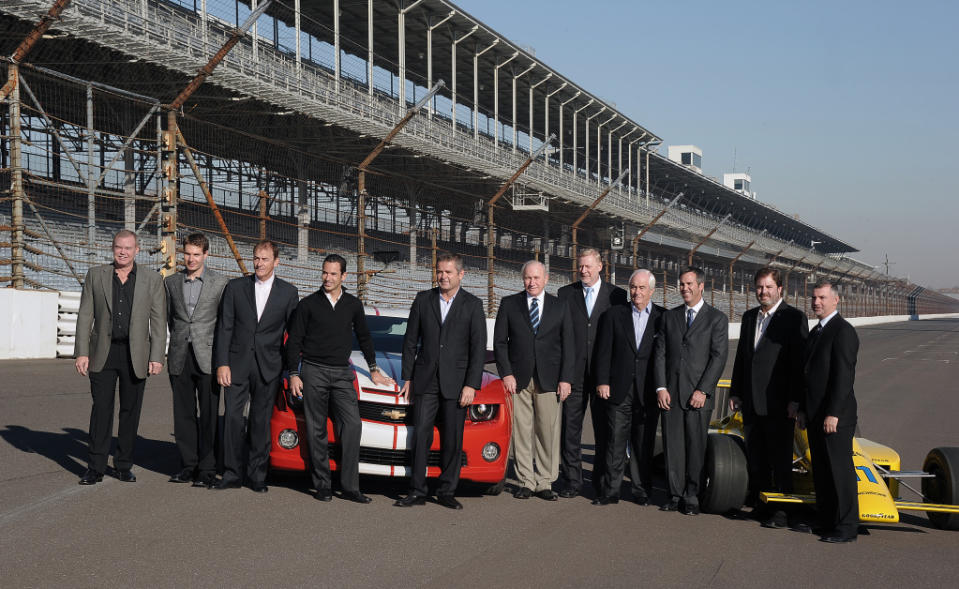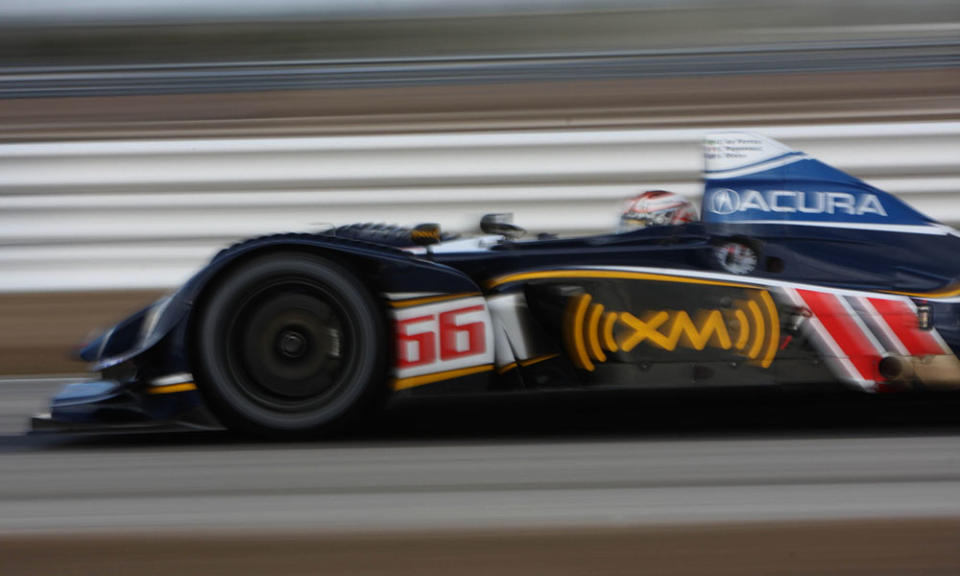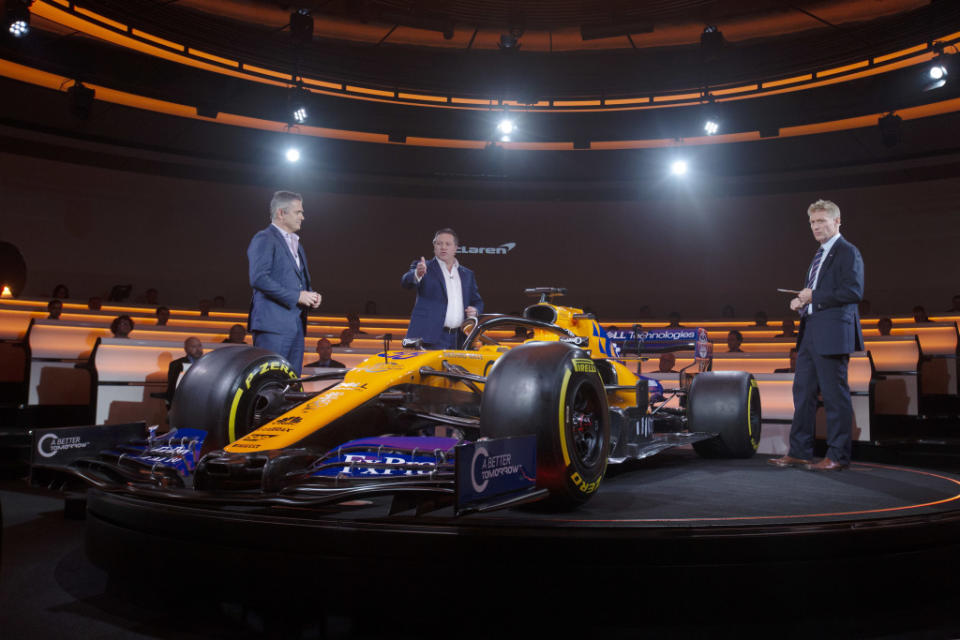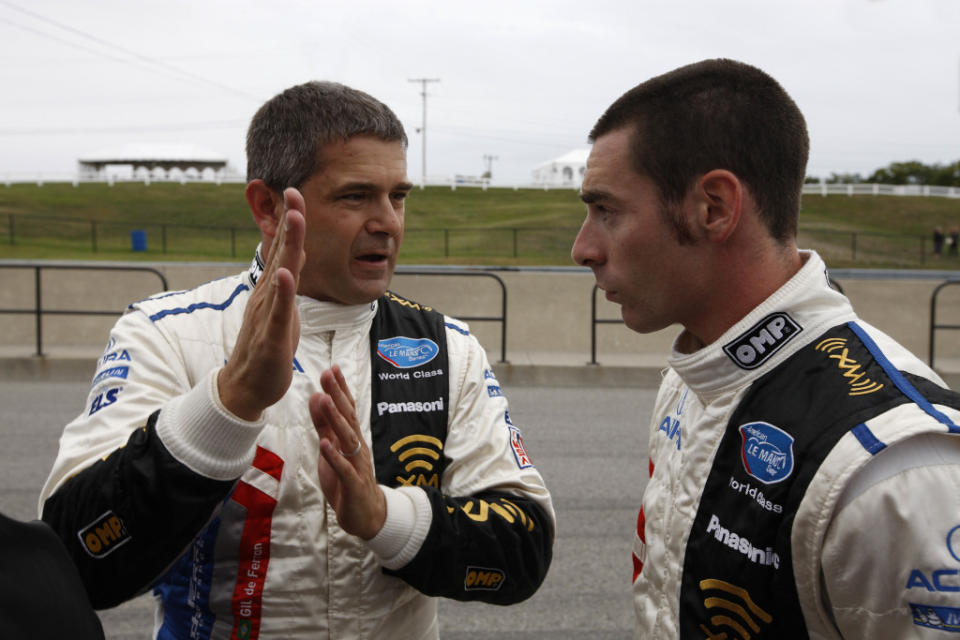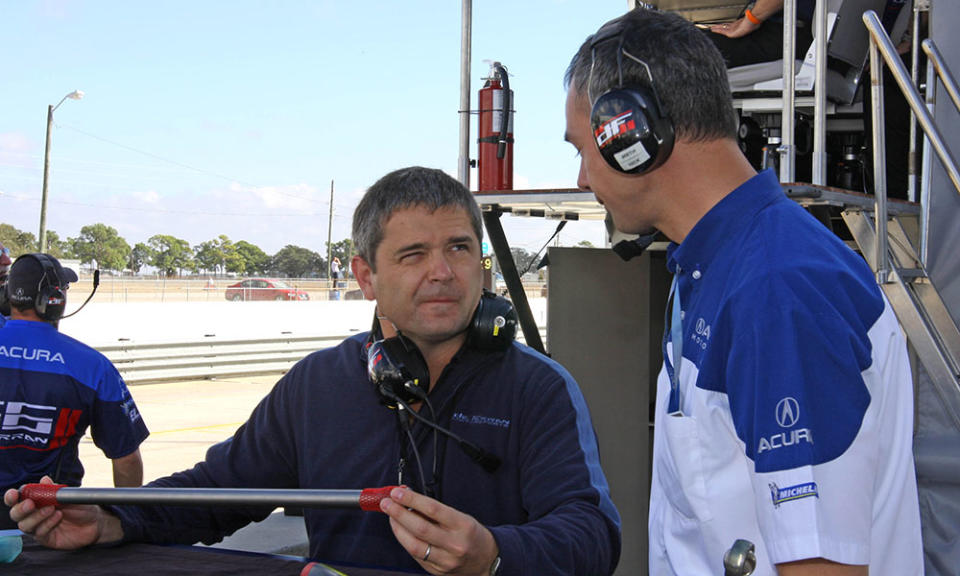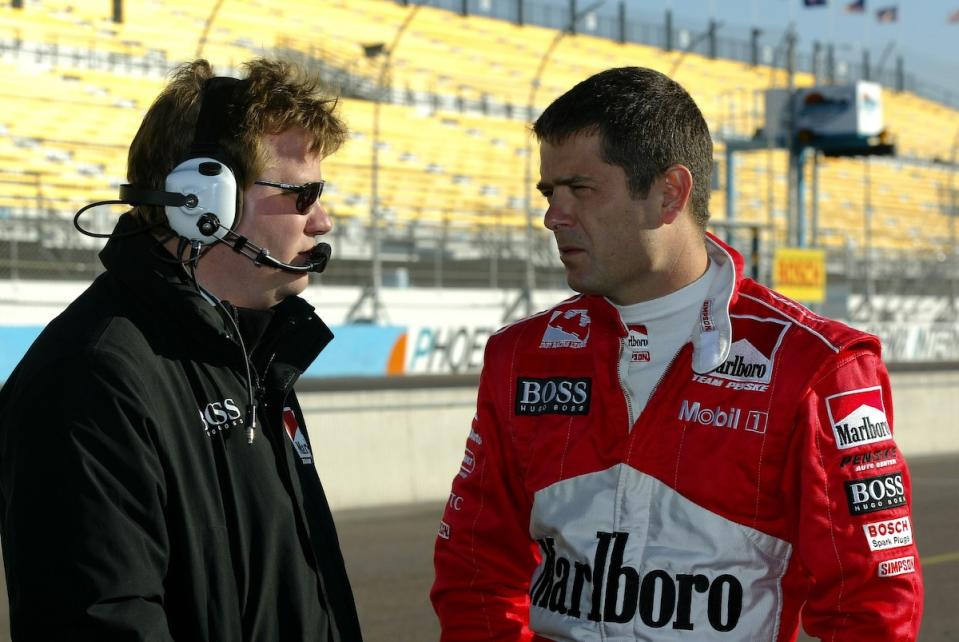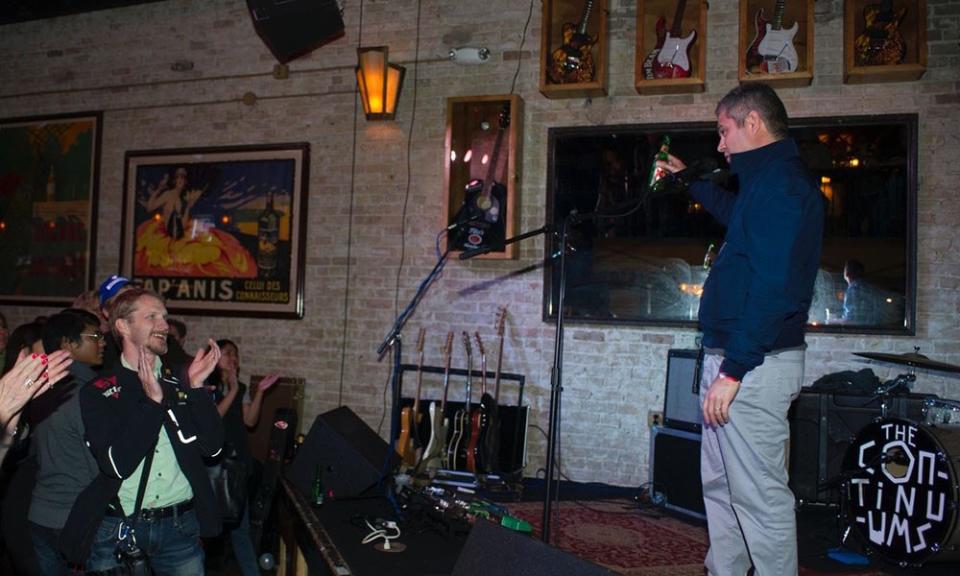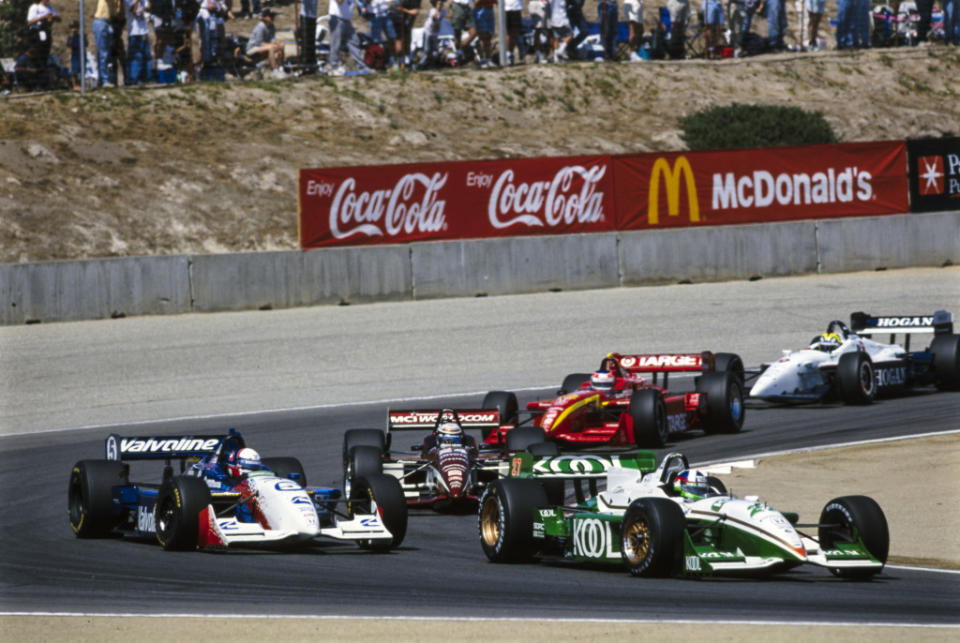Gil de Ferran as his friends remember him
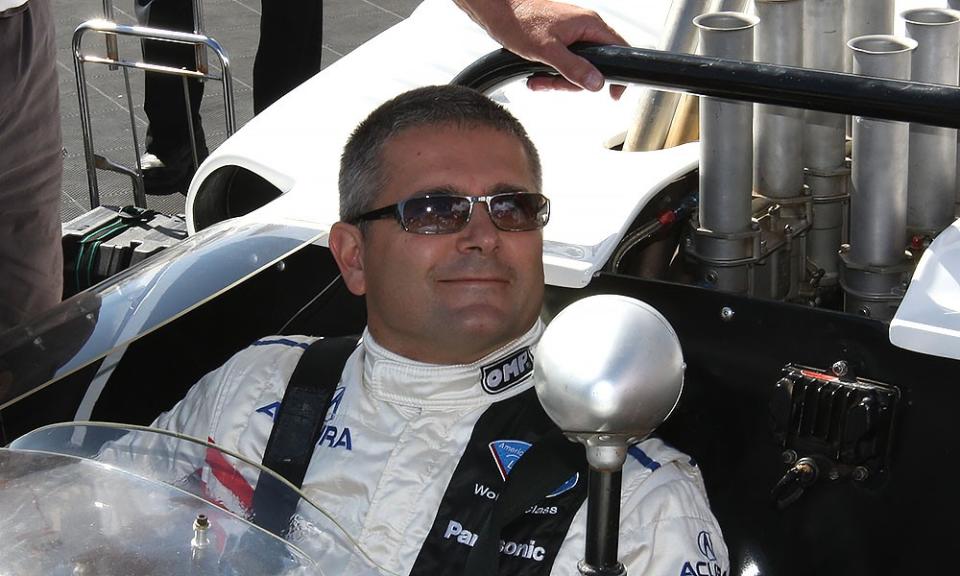
The first image that comes to mind of Gil de Ferran is the impressive amount of mischief contained in the corners of his mouth. It’s where that wry smile was formed.
He’d see you from afar and one side of his face would react, almost involuntarily. It couldn’t be helped or stopped. And this wasn’t a smile where both sides rose uniformly; with de Ferran, it was usually a raised corner and a raised eyebrow, signals both that something funny — and at my expense — was on the way.
“I see you’re eating well,” was a favorite line he’d uncork once he got within earshot. And I loved it.
Such things were never said with malice. Not with one of the kindest people to grace our sport. With de Ferran, there was an expectation that any of the grief he would give would be returned, and that’s where his playful side — the roots of that mischievous smile — made it hard not to love the professorial Brazilian.
As a community, we’ve been shaken by de Ferran’s death. This has been a punch to the soul.
Taken at 56, his relative youth was the first factor that was nigh on impossible to process. Once his loss was accepted, the grand place he held within so many people in the sport — as a friend, confidant, and fountain of wisdom — became the next aspect to mourn. There’s been rejoicing, as well.
An unfathomable amount of appreciation and gratitude has been expressed for the two-time CART IndyCar Series champion, Indianapolis 500 winner, sports car team owner, sporting director and advisor to Formula 1 teams, and consultant and visionary whose incredible blend of technical and interpersonal skills enriched every racing organization he touched. His unwavering dedication to his wife Angela and the raising of their kids Anna and Luke is another area where he served as a massive influence to others in our busy sport.
And in that spirit of giving de Ferran his flowers, a number of his closest friends, teammates, colleagues, and more came together to share their thoughts about the man in ways that reveal the immense depth and humanity.
Here’s a collection of tales about Gil de Ferran, in both written and audio form. I hope you enjoy.
Randy Bernard, IndyCar CEO, 2010-12
The loss of Gil de Ferran hits me particularly hard. Gil was far too young to pass away and he was definitely someone you loved once you met him. He was a true gentleman and a class act.
I selected Gil to be on my ICONIC committee at IndyCar to help develop the car for the future. Gil was very passionate about this and Gil, Tony Purnell and I toured Europe meeting with car manufacturers and F1 teams. It was quite a grueling trip, but so worth it. We had several goals; first, to see if any manufacturers were interested in coming to IndyCar since we only had one powertrain with Honda at the time.
We were wanting to talk with CEOs to determine the fuel source of the future and we quickly learned every manufacturer had their own ideas — natural gas, diesel, ethanol… We also wanted to directly hear from them about what would excite them in racing to possibly move into our series. Gil was a racing legend, so the time and attention they gave us because of him was something I will never forget. I have two memories that stand out during that time which I think about often.
We were in Verano de Melegari, Italy, meeting with Gian Paolo Dallara, a legend in developing race cars. Mr. Dallara was also engineering cars like Bugatti, Maserati and Lamborghini. He was honored to have Gil at his headquarters and first we spent some time in Mr. Dallara’s simulator that he was partnered on with Ferrari. Then he proceeded to give us a very private tour showing us cars he was developing. One in particular was a street car he was building that he wanted to call “Dallara.” There was only one of them in the world and didn’t even have its skin on yet. It was a very powerful car and Gil was like a kid in a candy store talking about it with Mr. Dallara.
Mr. Dallara asked his team to move it to his private racetrack across the road because he wanted Gil to drive it. Gil was elated! This was like asking an astronaut if he wanted to go to space. We went across the road and Mr. Dallara asked if I wanted to ride shotgun with Gil, and of course I wanted to. We put on our race suits and Gil took it out on the track for four or five laps. He came back in and needed to put some tape on his helmet as a visor to keep the sun out of his eyes.
We took it back out and after four or five more laps, he looked over at me with a thumbs-up and pounced on it. We made a couple more laps before something went terribly wrong. We started spinning out of control until we hit the wall! Yes, we did a lot of damage to the car while Mr. Dallara watched. Gil was so apologetic, but Mr. Dallara just chuckled. You could see he had so much appreciation for Gil and not another word was ever said about it. On the other hand, I brought it up often!
The second memory was after this exhausting trip, and months later after every manufacturer had turned us down, we only had one left: GM. We really didn’t have high expectations with this meeting due to the major embarrassment of the U.S. government’s bailout of the auto industry. Gil and I fly up to Detroit and go to the very top floor of GM’s headquarters. I remember it like it was yesterday, taking that elevator ride to the top, feeling like we know the answer before the meeting even begins, especially from all the rejection Gil and I had heard.
We were meeting with the president of GM, Mark Reuss. We made our pitch to Mark and we were waiting for the “We can’t afford it” or “We just aren’t interested,” when Mark says, “We are in. With one promise — you need to bring a race back to Belle Isle.” We couldn’t believe what we heard. I felt like crying right there. We all shook hands and walked back to the elevator in silence. Once that elevator door shut, we looked at each other and started dancing and hugging each other like we had won the lottery.
From left: Al Unser Jr., Will Power, Arie Luyendyk, Helio Castronves, Gil de Ferran, Neil Ressler, Tom Stephens, Roger Penske, Randy Bernard, Eddie Gossage and Tony Cotman at the 2010 announcement of Chevrolet’s return to IndyCar. Dan Boyd/Motorsport Images
Gil was a special individual that you were drawn to above and beyond his legacy of racing — his passion for life, his demeanor of always being willing to listen. I would never want to take anything away from any one individual that was on that ICONIC committee, as every single person contributed so much time and value. But I am confident that car would have never had seen the light of day without the passion of Gil and his vision. He never wanted the limelight, maybe because he knew the owners would want my head on the cutting block regardless, but anyone that knows Gil knew that was just him.
Although I left the racing world almost 10 years ago, I had many great memories and had the privilege to work with some of the greatest, and Gil de Ferran was one of those and made this cowboy feel welcome and appreciated. I know the racing world mourns for the loss of him as he was a true ICON.
Scott Dixon, CART IndyCar Series and Indy Racing League rival from 2001-03, de Ferran Motorsports American Le Mans Series Acura teammate, 2008-09
With Gil, one, is his off-track presence, right? Always super engaging, not like some people who can be quite loud. He always had a calmness to him as well. Super easy to talk to, super approachable. You don’t see that too often in racing, especially with the stressful weekends and all that’s going on. Even in the early years when he was dominating championships, and winning 500s. You don’t always see that side from people.
Dixon came to appreciate additional sides to racing through his stint in ALMS with de Ferran. Marshall Pruett photo
Throughout my career, even when I was looking at doing different things with different teams, Gil was always somebody to talk to because I always knew that he’d seen a lot in many different formulas as well. Probably the most fun I had with him was obviously doing the LMP2 and then LMP1 projects with him and [Simon] Pagenaud.
What always fascinated me with Gil was that he had the racing thing, but it was always the other projects that he was working on; he was relentless. Pushing boundaries and you even see that with Formula E, and whether it was with Honda in Formula 1 or with McLaren lately. But what was nice about Gil, too, is he flew under the radar. He didn’t feel like he was one of those guys that had to always promote himself.
I remember when we were looking at British schooling for our kids, I called Gil just to say, “Hey, what did you guys do with schooling?”, and he was like, “We did boarding school and I wasn’t used to that.” He said when he dropped the kids off to boarding in England, “The only person crying was myself, you know, sitting in a pile, crying at the boarding school as the kids just walked off and said, ‘See you later.’” I feel like that really summed up Gil just in that kind of that moment he had sending his kids off for school.
I don’t think I’ve really come across anyone like him in our sport.
Zak Brown, McLaren Racing CEO, hired de Ferran for two stints to help turn their F1 team around
I think he is the only person where I have never heard anyone say anything negative about Gil de Ferran, anywhere. I’ve just not come across anyone who didn’t like Gil de Ferran. That was very much how the McLaren organization felt about him. He was able to get people to collaborate, communicate, open their thinking, trust them. Everybody from the senior management to the mechanics to the drivers, he just built trust and confidence.
When we brought (engineering director) Pat Fry back (for 2019), Gil played a huge role in that. I looked at our win (at Monza) in 2021, and a lot of people understand the lead times in Formula 1, but a lot of people don’t; our 2021 success was really owed to 2019 when you develop your 2020 car. In 2019, I had Pat Fry, Gil de Ferran, Pete Pedromo, and Andrea Stella leading the charge; they designed the car in ’19, which is what comes out in 2020. We’re back on the podium.
Then COVID hit and all that we did between ’20 and ’21 was put the Mercedes in the back of the car. The ’21 car was the same as the ’20 car, which was done in ’19. We go on to win in ’21, Gil’s moved out of the organization (by then), the people that get the credit in ’21 for winning, actually, that was 2019.
Although he’d left the team by the time of its return to F1 winning ways, Brown — seen in the middle here at the launch of the 2019 McLaren — says the foundations of that success were helped put in place by de Ferran (at left). McLaren photo
Then you come back and you look at our success the second half of this year. When did we bring Gil back? The end of ’22 to early ’23. And when did our car get good again? The middle of ’23. So. not a coincidence that Gil was there for our resurgence in 2019. And 2023, he was there when those cars and those people were coming together to develop the on-track product. ’21 happened in 2019 on Gil’s watch.
And that’s something I think, because he wasn’t on the pit wall in ’21 when we won, people think the people on the wall — which of course were big contributors to it [were the only ones to celebrate] but Gil was behind the scenes, instrumental in both of our comebacks here. I think we’re now on a great journey forward, and Gil’s been instrumental in that.
I can tell you, the racing team, we’re gonna celebrate Gil, and Gil is with us. He is a huge motivation for us moving forward, so we’re excited to go racing with Gil because the impact [he] has had on this team is going to carry us for a long time.
David Porteous, racing filmmaker from Canada
I was really sorry to hear about Gil. When I was a young kid, age 8 or so, I somehow ended up chatting with Gil at the Toronto IndyCar race. Super nice guy, and he gave me his email address! It was the early 1990s, so that was not a common thing a lot of people had. And for years he responded to my emails where I asked loads of racing questions or how his race weekend went.
At that age I felt like we were almost best friends, and any time I saw him at races in Toronto he was always super nice. Gil was always patient to reply to my questions, like how did he get started racing, asking him advice on how I might get into go karting or being a mechanic, what it’s really like going that fast, and so on. As you can imagine at that young age I felt super connected to the series, as if somehow I was involved in it, even by proxy.
It was probably about 10 years ago I decided to go back to try and retrieve all those many Gil emails, but unfortunately, the email server I used had deleted them.
Whenever I saw him in Toronto he was always kind with me and his fans. During those weekends as a kid, I used to go around asking drivers and mechanics for spare parts of the Indy cars as I collected them. Gil gave me a part of the underside of his Indy car and signed it. Though my dad probably wasn’t as thrilled about carrying this giant piece of Indy car around for the rest of the race day, Gil’s time for me really created so many memorable moments for me and made my connection with IndyCar.
His character also set the stage in terms of learning that even if you are famous, there isn’t an excuse to act like a jerk or to think that you’re more important than the little guy. That really had a positive impact on me. But even more importantly, I learned about patience and kindness. Not something you’d expect to learn at an IndyCar street circuit… I can’t tell you how many times I’ve randomly reflected on my interactions with Gil and how brought a smile to my face. I’m very grateful for those moments.
Simon Pagenaud, de Ferran Motorsports ALMS driver 2008-09
So we go testing and it was really fun. I’m going in, first day in the car, and I go out there blazing fire, going as hard as I can. I come back to the pit and Gil’s like, “Man, you didn’t waste any time, did you?” I said, “That’s why you hired me to do the job. I’m just gonna try as hard as I can.” And he says, ‘”OK.” He goes out and matches my time, comes back, and the debrief is just unfreaking-believable. I’m like, “F***, I know nothing about what I’m doing. This guy is just at a whole different level.”
That’s where it really started for me. Debriefing with engineers and starting the love of describing every single detail of the race car, the racetrack, the bumps, the traction control, the tires, the brakes, all the sensory things that you get as a race car driver, but until you have someone like Gil that describes in front of you, you just can’t put it in words.
Gil de Ferran’s communicative gifts opened Pagenaud’s (right) eyes to the art of the debrief during their ALMS association in 2008-09. Michael Levitt/Motorsport Images
Gil was able to do that, but in such an intelligent way, with a lot of emotion as well — because he was Brazilian — [so] the whole room would stop and listen. And he could keep the attention on him for three hours if you needed to, but he knew exactly at what point to stop and walk off, come back, and check on the work and if it was done.
Engineers always have a way to tell you they know better than you. Gil was able — he was an engineer already so he had that respect. He was able to always have the arguments to counter the engineers and often he was right and even engineers were learning from him, so it was incredible.
He was an open book. I can recall many dinners we had where I was just there, not eating the plate in front of me, just listening. It was fantastic.
Gil with ARX-02a designer Nick Wirth in 2009. “He was able to always have the arguments to counter the engineers and often he was right and even engineers were learning from him,” Pagenaud says. Marshall Pruett photo
He was like a dad to me. I was telling my dad, actually, we were talking about Gil, because Gil welcomed my parents in his family many times and was very, very family-oriented. His kids, Luke and Anna, they were everything to him. He did the same with me and brought me into the family with Angela. I was talking to my dad and I said, “You’re obviously a very big part of my life; I look at you as my main role model in life,” but, I said, “Gil had something you don’t have.”
I said, “You’re very pragmatic, and Gil was very pragmatic, but Gil is in my industry and understands exactly how things are supposed to be. He has some visions that you don’t have.” So I needed Gil on my side to grow into the human being that I am today. I think life is about the role models that you have, and you have pillars in your life. They take you a certain path, and you just follow their advice, their counsel. Every time I had doubts, every time I had moments of success, I would call Gil, no question. It would be an hour conversation, and hour-and-a-half conversation.
It is tough for me today, because it’s like losing a pillar of your life, a pillar of your foundation.
Tom German, de Ferran’s Team Penske race engineer in 2000-03, a stint that included setting the all-time qualifying lap speed record of 241.428mph at Fontana’s California Speedway
Brown and de Ferran in 2002. Team Penske/Steve Swope photo
I think that was a little bit of a surprise when we qualified that well. It is always a challenging conversation going into qualifying because obviously you want to reduce the downforce, which consequently reduces the drag and gives you a little more top speed, that obviously makes the car a little bit harder to place, a little harder to handle, and finding that right balance of getting the speed and being able to get through the corner without scrubbing any crazy speed from having that balance. It’s a fine edge of getting everything lined up at the same time and producing that lap.
So we were on the fence there. Going into qualifying, we weren’t thinking, “Oh, we’re going to get a lap record and blow everybody away.” But as it turned out, that was the day that happened. The key thing is having a driver that also understands that the steering wheel is a brake. Every time you add a bit more lock, you’re putting a little more drag force from the tires into the car, and it just slows you down a little bit.
Having a driver that’s willing to explore low downforce at the same time that you’re trying to make the car the right level of neutral so it doesn’t scrub too much from the rear, doesn’t scrub too much from the front, is really the art of getting that right at the right point in time.
Will Buxton, journalist, Formula 1 presenter
Back in 2013 I was trying to get a charity night off the ground in Austin for the F1 weekend. Gil said he’d pop down if he could. As it turned out his flight was delayed and that was that, or so I thought. As the night was due to end, a murmur became a hum became a cheer from the back to the front of the room as the outline of a man pulling a wheelie suitcase appeared through the swiftly parting crowd.
With a beer in his other hand he’d already been handed by an awed fan, Gil took to the stage, having arrived come straight from the airport. He regaled the crowd with stories they nor I had ever heard — most unprintable. The roar for him when we finally had to end the show almost blew the windows out. That was Gil. His word was his bond. He kept promises, remembered his friends, made time for his fans and was adored by them as much for who he was as for what he could do behind the wheel. I loved him. I’ll miss him.
Late-arriving but still the life of the party. Jamey Price photo courtesy of Will Buxton
Justin Bell, open-wheel and sports car racer, broadcaster, one of de Ferran’s closest friends
What was spectacular for me in our Florida group — and thanks to him, I got exposed through to the Tony Kanaans and the all the Brazilian drivers down there — everybody was in this community. It was my first experience of the passion that especially the Brazilians have for life, and he would have a race on the weekend that was demanding and Gil was doing his racing and I was doing my own stuff in racing, but we would get together on a Monday and his house was the place to be.
It was as though the tension and the pressure the week before, and the stress of going 200 miles an hour-plus the day before, crash or win or whatever happened, and we would let loose on Monday. It was just this eye-opening thing for me, that you can be a leading athlete in your sport like he was, and basically be a total prat on a Monday and jump in the pool with our clothes on and drink and barbecue.
I was like, “Oh my God, this is how to do it!” He actually opened my eyes to how you can combine both sides of life and be successful, which is so funny because I’ve read a lot of people say, “I didn’t know Gil, I just knew him through his racing.” And I’ve got to say, if you just know him through his racing, you know half the man.
What was beautiful about it was we would rip each other apart in that way that only great loving friends can do. I’d walk in and go, “You’re just a fat bastard mate. What are you doing?” And he’d go, “It’s not that bad.” And I say, “You look like a flippin’ Buddha.” And we can talk like that. And…he would give [it back], and I would just laugh.
He would talk to you, and he would make you feel that was all he was interested in. Nothing else was distracting him; it was your issue or your subject or your problem or your decision you had to make. And he wouldn’t let it go. I’d be often like, “All right, I’m over this. I’ve thought this through enough. Now I’m gonna do it.” And he’d be like, “No, no, no. Have you considered taking this and doing that and cooking the recipe of life in a different way?”
Great man, great human, great dad, great friend, great driver.
Dario Franchitti, CART IndyCar Series and Indy Racing League rival from 1997-2003, Paul Stewart Racing and Acura ALMS stablemate
The first time we met, they put us all in a line and introduced us as the Paul Stewart Racing drivers of ’92. I would see Gil around the Paul Stewart factory and was slightly in awe of him at first. He would always spend a lot of time upstairs…with a lady who worked there called Angela. And he spent a lot of time around Angela’s desk and it all seemed to work out OK because they got married and had two incredible kids. That was my first introduction to Gil.
When I was having some struggles in Formula 3, Gil actually came and drove the car and spent a day trying to help me understand where I was going wrong. I was essentially overdriving the car, and it was very helpful. That was my first insight into his way of…not just driving a racing car, but thinking through driving a racing car, setting a race car up and all those things. That had a big effect on me in how I then approached things from then on, because he was so cerebral about it.
But I made the mistake when I first went to America, thinking because he was so such a deep thinker, that in some way he was maybe less than aggressive on the track. I made that mistake once because he could go toe to toe with the best of them as far as just aggression and race craft and lean on the line [with] bravery.
In CART, Franchitti learned another side of former mentor de Ferran, seen here in his Walker Racing Reynard 99I-Honda sizing up Dario’s Team KOOL Green Reynard-Honda at Laguna Seca in 1999. Motorsport Images
And that lap he did in Fontana — 241mph — man, the bravery. The bravery it took to do that was incredible. When you had that bravery, but that brain as well as the skill…man, he was hard to beat.
I’ll give you my final thought on Gil. It might have been the last time I saw him. Every year at Indy they put us old guys out on the parade with their families in the cars and we wave. And because Gil won in ’03 and I won in ’07, some times — most times, actually — we were nose to tail. Our families would take pictures of the de Ferrans and they’d take pictures of us.
We’d shout abuse each other. We’d blow kisses, and I think that was one of the last times I saw him. And then I saw him at the Goodwood Revival; we had a lovely time — [a bit of rivalry]. But that lasting impression of the four de Ferrans — Anna, Angela, Luke and Gil — waving to the crowd and then Gil turning around and waving at us, with that big old smile on his big old head. Yeah, that’s how I’ll remember him.

 Yahoo Autos
Yahoo Autos 